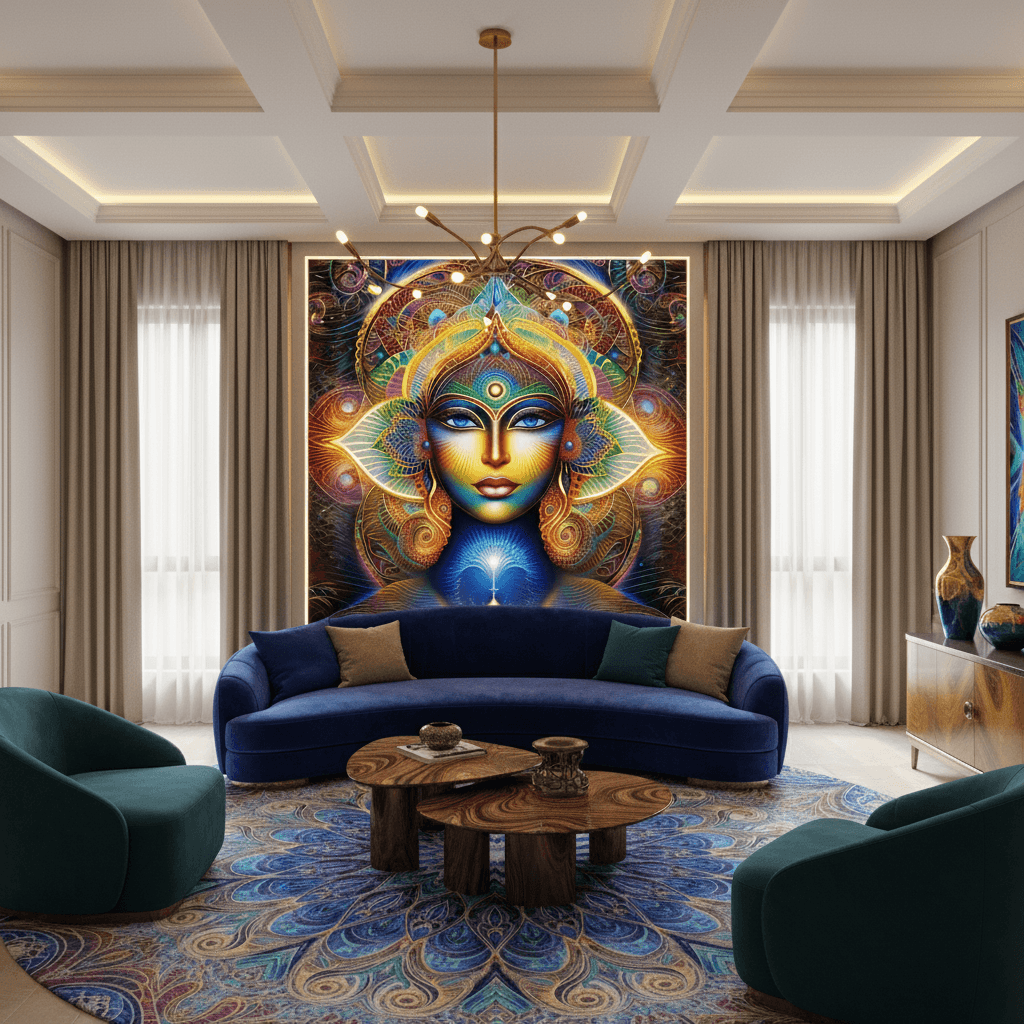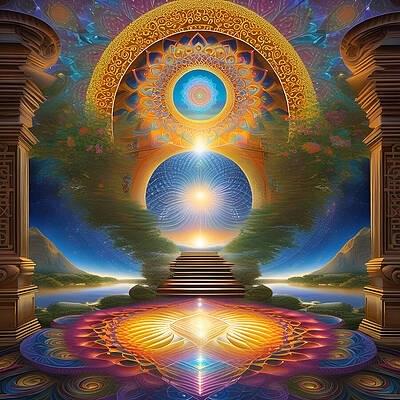Interiors that reflect the atmosphere of spiritual healing, esoterica, calming peace, and meditation retreats are designed to foster inner stillness, connection, and a sense of sacred space.

These environments often blend natural elements, soft textures, symbolic decor, and mindful design principles to create a sanctuary for the soul. Here’s how such interiors are typically characterized:
1. Natural Materials & Earthy Palette
- Materials: Wood (especially reclaimed or light-toned like ash or birch), stone, linen, cotton, wool, clay, and bamboo.
- Colors: Soft neutrals (beige, cream, white), earth tones (terracotta, sage green, warm gray), and muted blues or lavenders—colors that evoke calm and connection to nature.
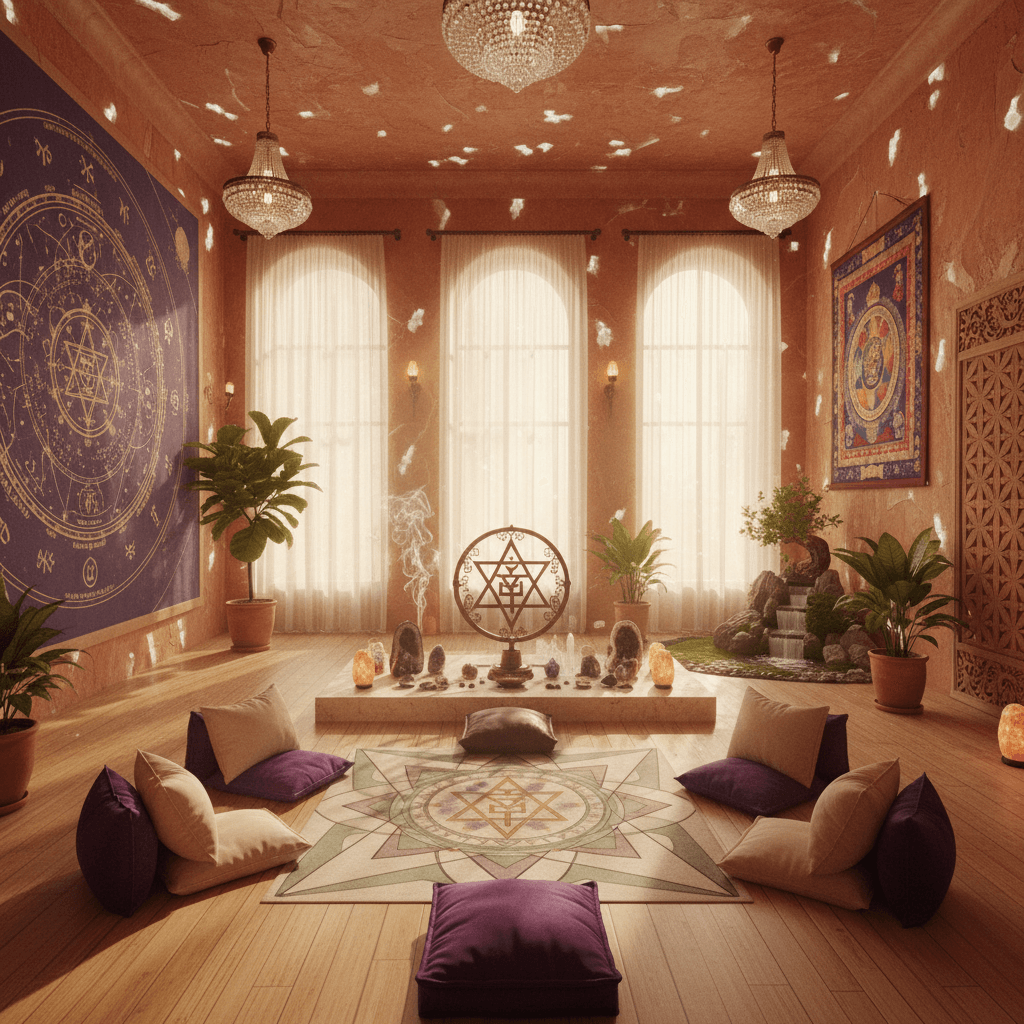
2. Minimalism with Intention
- Clutter-free spaces with only meaningful objects.
- Furniture is simple, functional, and often low to the ground (e.g., floor cushions, low wooden platforms).
- Emphasis on open space to allow energy (chi or prana) to flow freely.
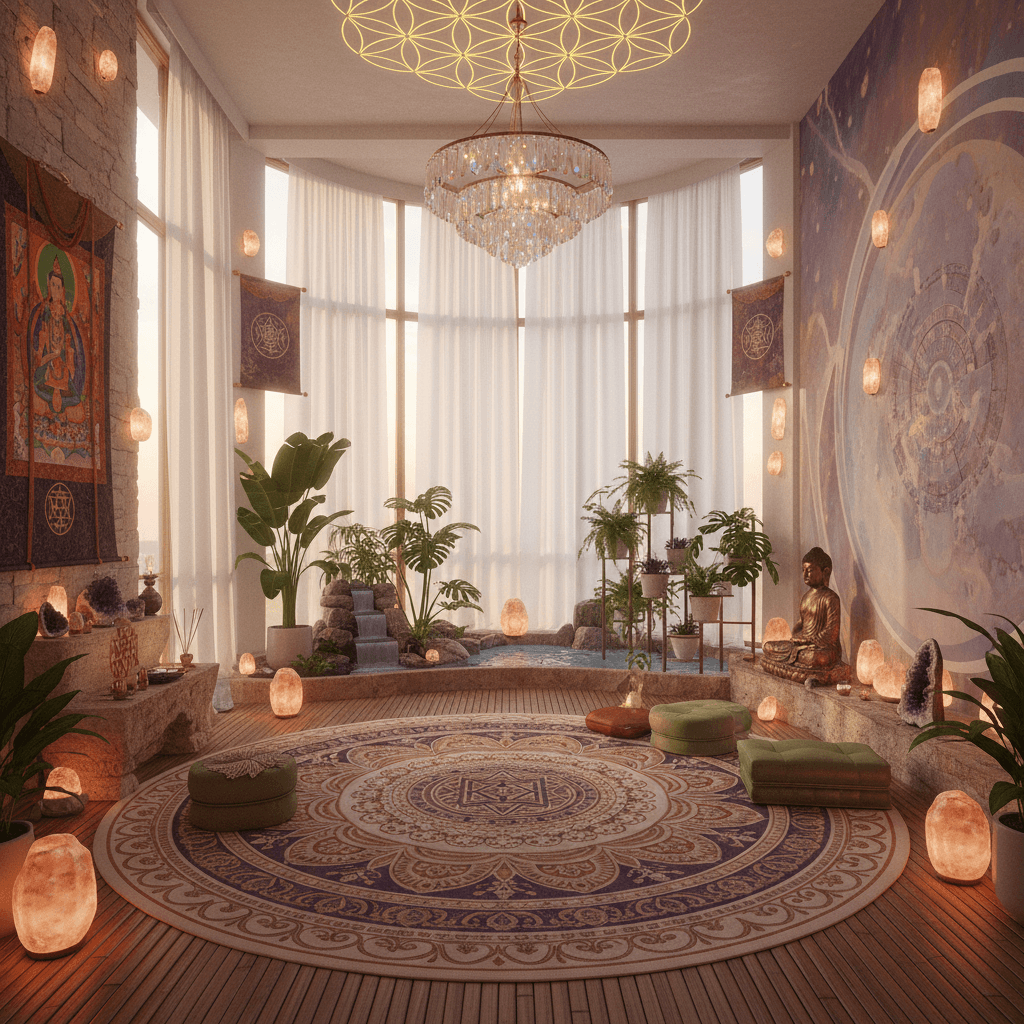
3. Soft, Natural Lighting
- Large windows for natural light; sheer or linen curtains to diffuse sunlight gently.
- Warm, dimmable lighting: salt lamps, candles, paper lanterns, or handmade ceramic lamps.
- Avoidance of harsh, artificial lighting.
4. Sacred & Symbolic Elements
- Altars with crystals, incense, candles, statues (Buddha, Shiva, goddess figures), or personal spiritual items.
- Mandalas, yantras, or sacred geometry artwork.
- Symbols from various traditions (Om, lotus, tree of life, hamsa) used respectfully and intentionally.
5. Sensory Calming Features
- Sound: Wind chimes, singing bowls, soft background music (tibetan chants, nature sounds).
- Scent: Essential oil diffusers with lavender, frankincense, sandalwood, or palo santo.
- Touch: Soft rugs, textured wall finishes (clay plaster), warm textiles.
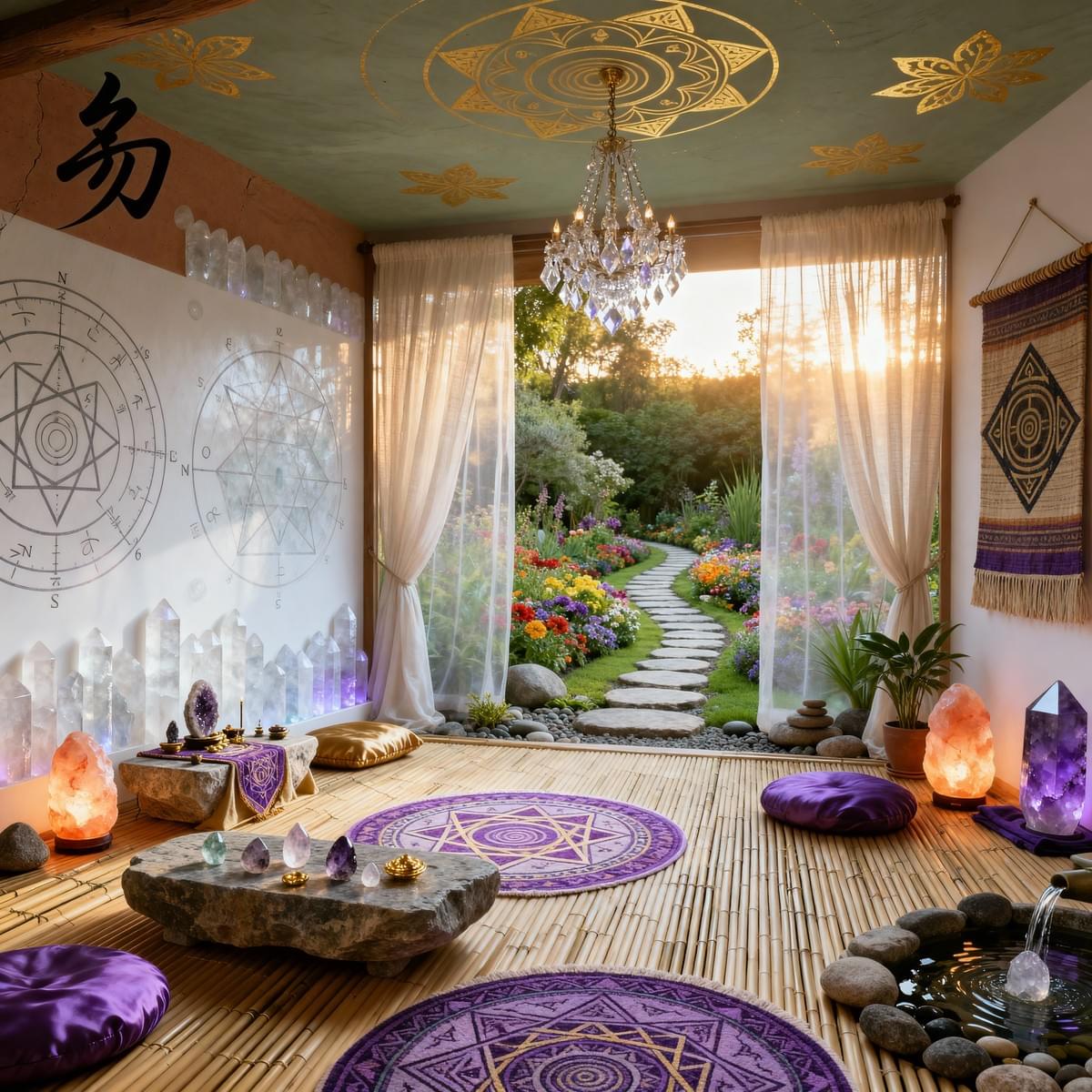
6. Connection to Nature
- Indoor plants (peace lily, snake plant, monstera) for air purification and vitality.
- Water features (small indoor fountains) for soothing sound and energy flow.
- Views of gardens, forests, or mountains if possible—biophilic design is key.
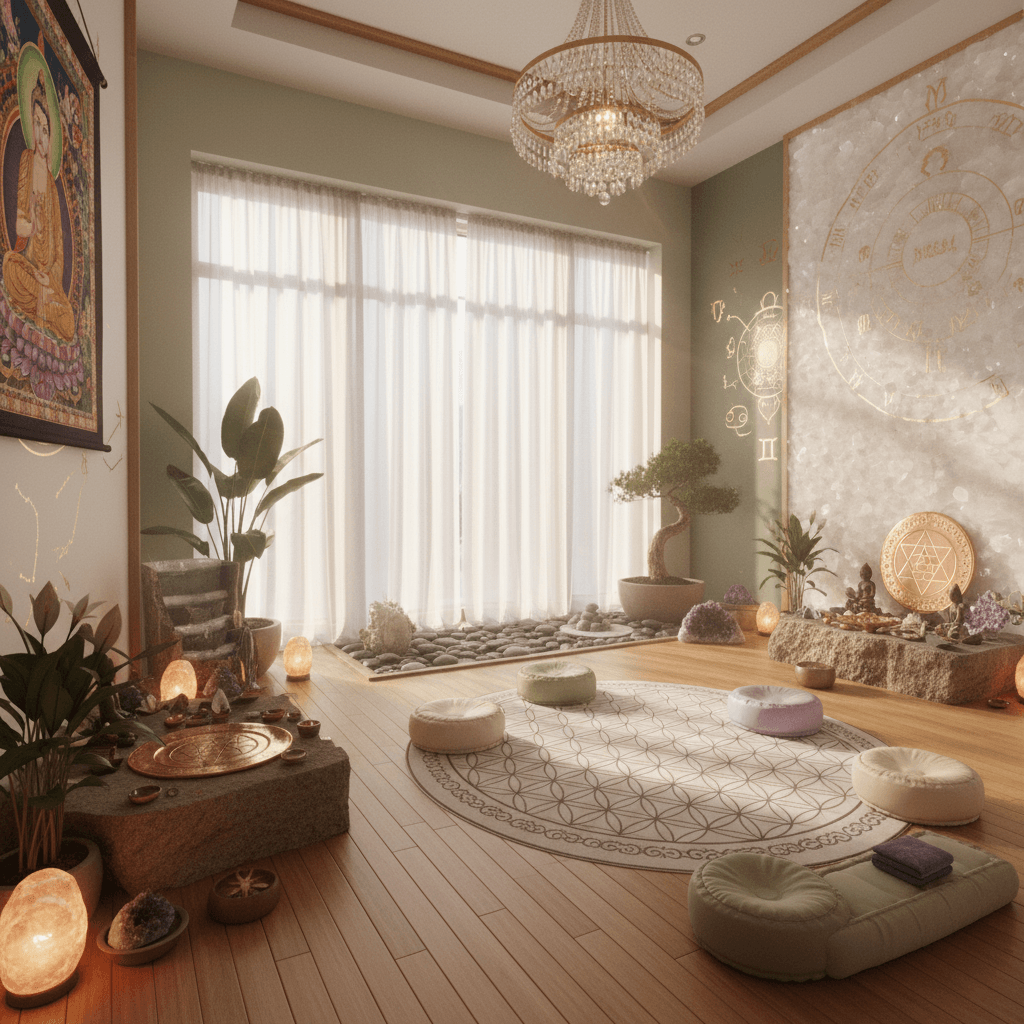
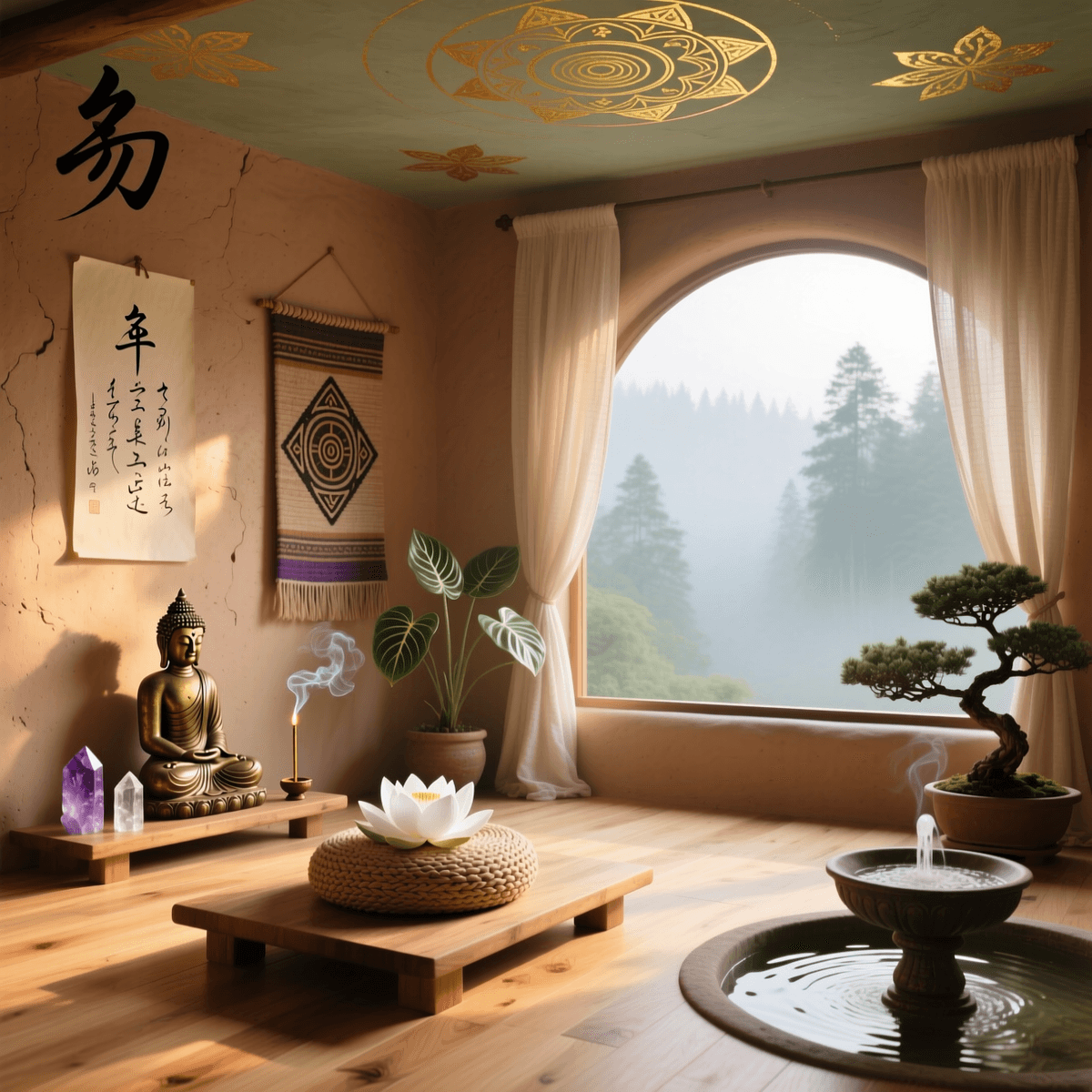

7. Meditation & Healing Nooks
- Dedicated quiet corners with cushions, a meditation bench, or a yoga mat.
- Reading nooks with spiritual books (Rumi, Thich Nhat Hanh, Eckhart Tolle).
- Healing spaces with massage tables, crystal grids, or reiki setups.
8. Textiles & Layers
- Organic cotton or hemp bedding and throw blankets.
- Handwoven tapestries or kilims with spiritual motifs.
- Floor pillows and poufs for flexible, grounding seating.
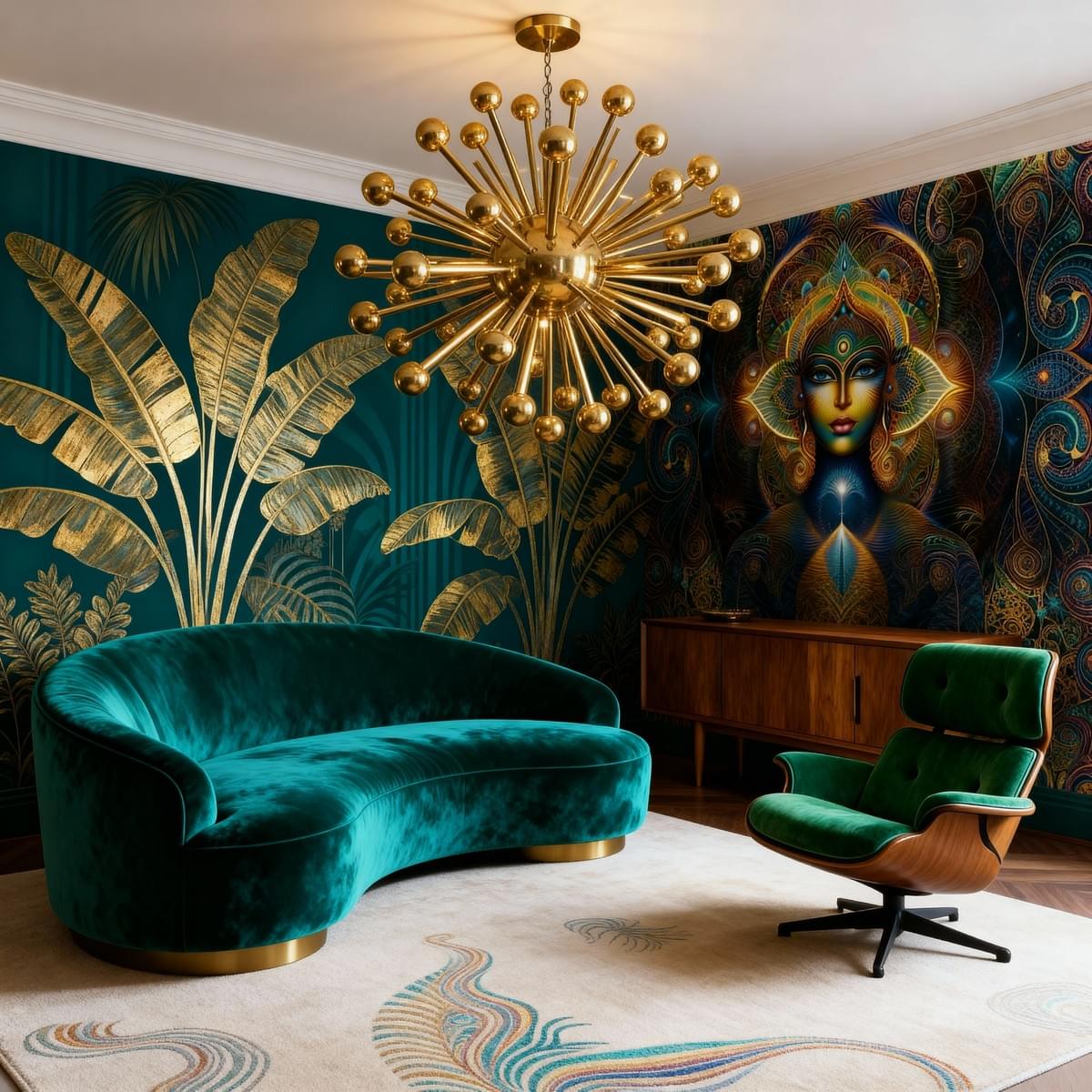
- Tibetan-inspired retreats: Rich reds and golds, prayer flags, thangka paintings.
- Japanese Zen spaces: Tatami mats, shoji screens, bonsai trees, wabi-sabi aesthetics.
- Boho-spiritual homes: Macramé, dreamcatchers, vintage rugs, and eclectic sacred objects.
- Scandinavian-minimalist spiritual: Light woods, white walls, hygge comfort with a mindful twist.
These interiors are not just about aesthetics—they’re designed to support transformation. Every element invites slowness, presence, and a deeper connection to self and spirit. Whether in a Himalayan ashram, a Bali eco-retreat, or a quiet room in a city apartment, such spaces become vessels for healing and awakening.
spiritual energy art prints to enter into another portal and make the perfect gifts for meditation practitioner.
